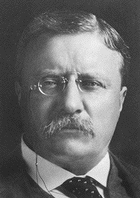Peoria is in the process of renewing a franchise agreement with Insight Communications. The city has been through this twice before (for a history of cable franchise agreements in Peoria, see my previous post on the topic), so you’d think this is pretty mundane stuff.
Not so. You may surprised to learn that franchise agreements are a hot topic across the nation because of a newcomer to the video-distribution market: phone companies. Yes, telecommunications giants like AT&T and Verizon are spending lots of money upgrading their infrastructure to offer not just better broadband internet access, but cable television. Many believe this new competition will help stabilize cable prices, which are increasing at twice the rate of inflation according to the Consumers Union.
The problem is, these phone companies don’t like negotiating unique cable franchise agreements with each municipality across the fruited plain (like the cable companies have to do). So they’ve been working very hard to do an end run around local municipalities by pushing for statewide franchise agreements. They’ve already succeeded in getting franchise agreements with Texas, Virginia, and our Hoosier neighbors to the east.
So successful they’ve been, phone companies are ready to trump both municipalities and states by pushing for a national franchise agreement. That’s right, legislation was introduced last year in the nation’s capital that would radically change the Telecommunications Act: S.1349/H.R.3146 (“Video Choice Act”), and S.1504 (“Broadband Investment and Consumer Choice Act”). And this year, a bill will be introduced in the House called the “Communications Opportunity, Promotion, and Enhancement Act of 2006.” These bills are all designed to take franchising authority out of the hands of cities and states.
There are a couple of groups against — in fact, incensed by — this action: cities and cable companies.
Cities don’t like the idea of losing local control. Franchise agreements offer numerous benefits to communities, such as: compensation for the use of public rights of way (e.g., utility poles, easements); mandates on customer service responsiveness; accessibility for public, educational, and governmental (PEG) purposes (e.g., channels 17 and 22 in Peoria); and requirements to serve the whole city (non-discrimination of service). That’s not an exhaustive list, but you get the idea. These agreements are beneficial to cities.
Cable companies don’t like the idea of these phone behemoths being treated as start-ups and given preferential treatment. They’re not buying the sob story from phone giants that it’s just so hard to negotiate all these individual franchise agreements when cable companies have managed to do it for 40 years. Plus, Verizon already has cable franchise agreements covering over two million households, so they don’t seem to be hampered too badly.
What does all this mean for Peoria? At this point, I can’t find any pending Illinois state legislation that would change the franchising process for municipalities, so there’s no threat on that front (correct me if I’m wrong). But if phone companies are successful in their lobbying efforts for national franchise agreements, it would render all Peoria’s current cable negotiations moot, and it could mean more expense to broadcast the city council meetings or the loss of PEG access altogether.

 “The things that will destroy America are prosperity at any price, peace at any price, safety first instead of duty first, the love of soft living, and the get-rich-quick theory of life.”
“The things that will destroy America are prosperity at any price, peace at any price, safety first instead of duty first, the love of soft living, and the get-rich-quick theory of life.” The Peoria County Board took an “initial vote” on the PDC landfill expansion request tonight, and unless some board members change their mind between now and May 3 when they take the final vote, it looks like the application will go down to defeat.
The Peoria County Board took an “initial vote” on the PDC landfill expansion request tonight, and unless some board members change their mind between now and May 3 when they take the final vote, it looks like the application will go down to defeat.